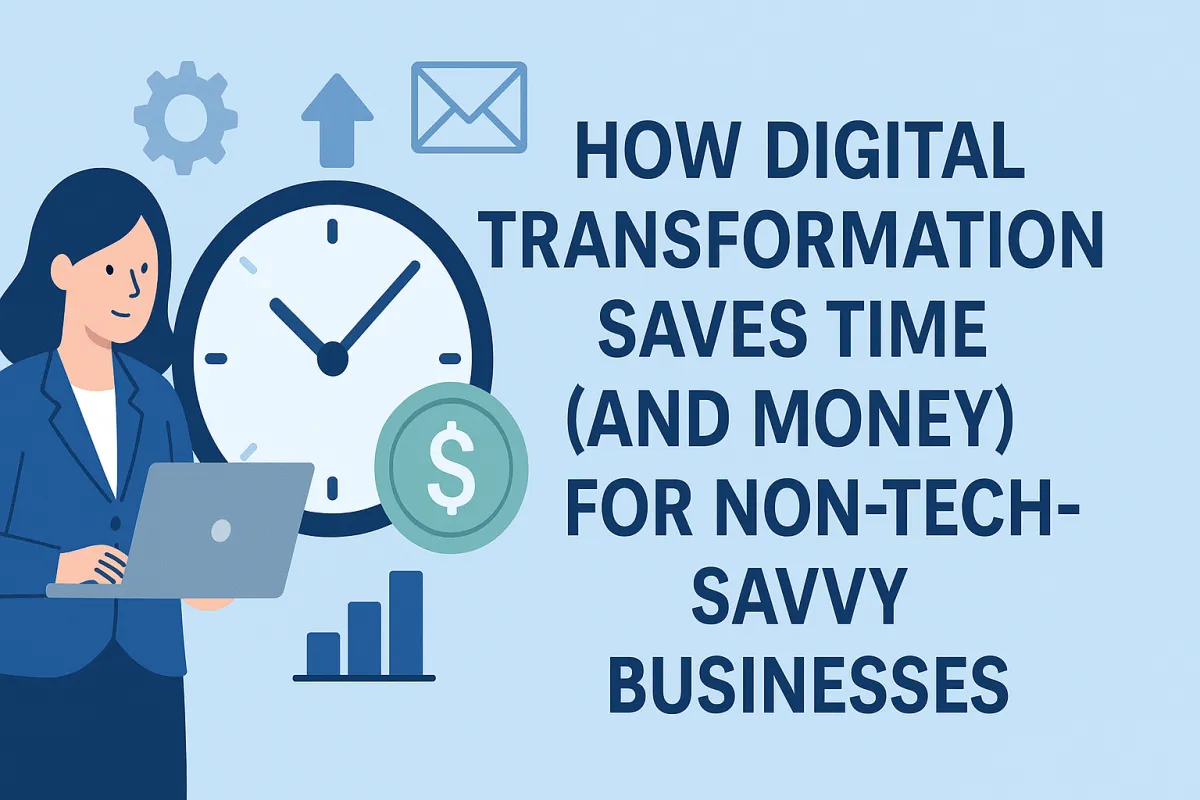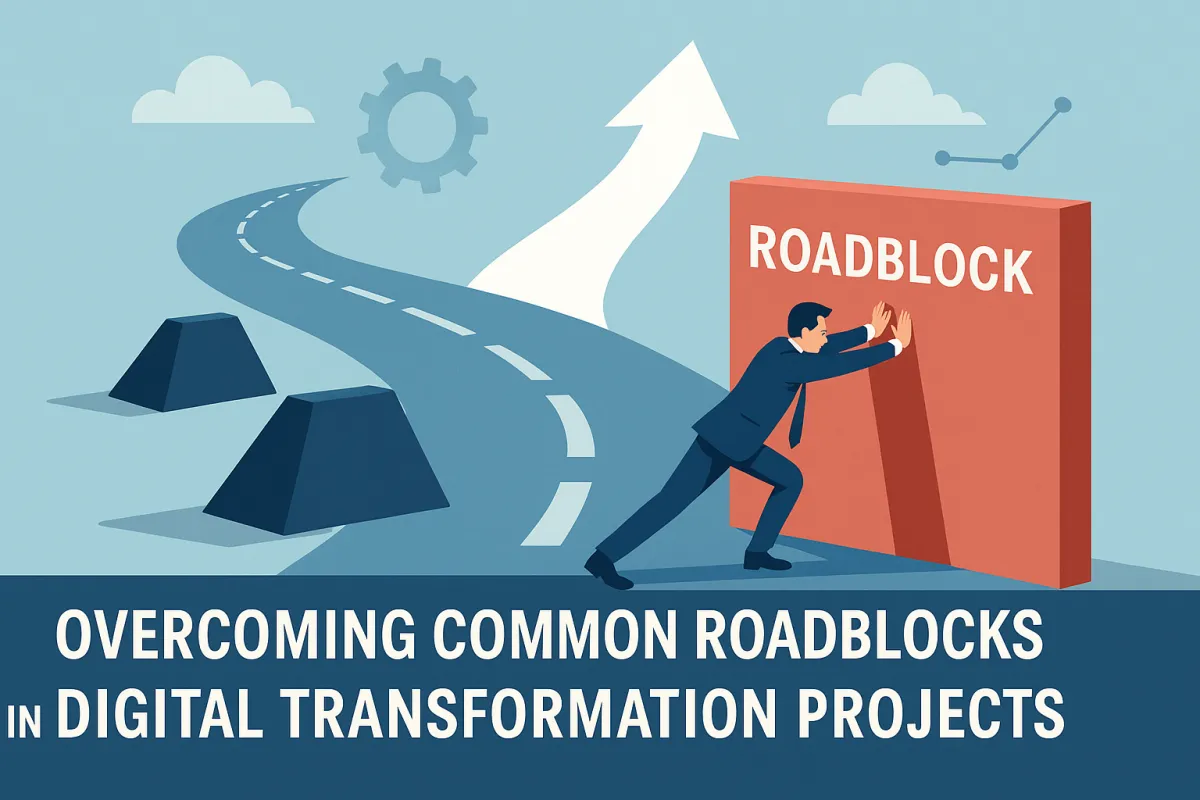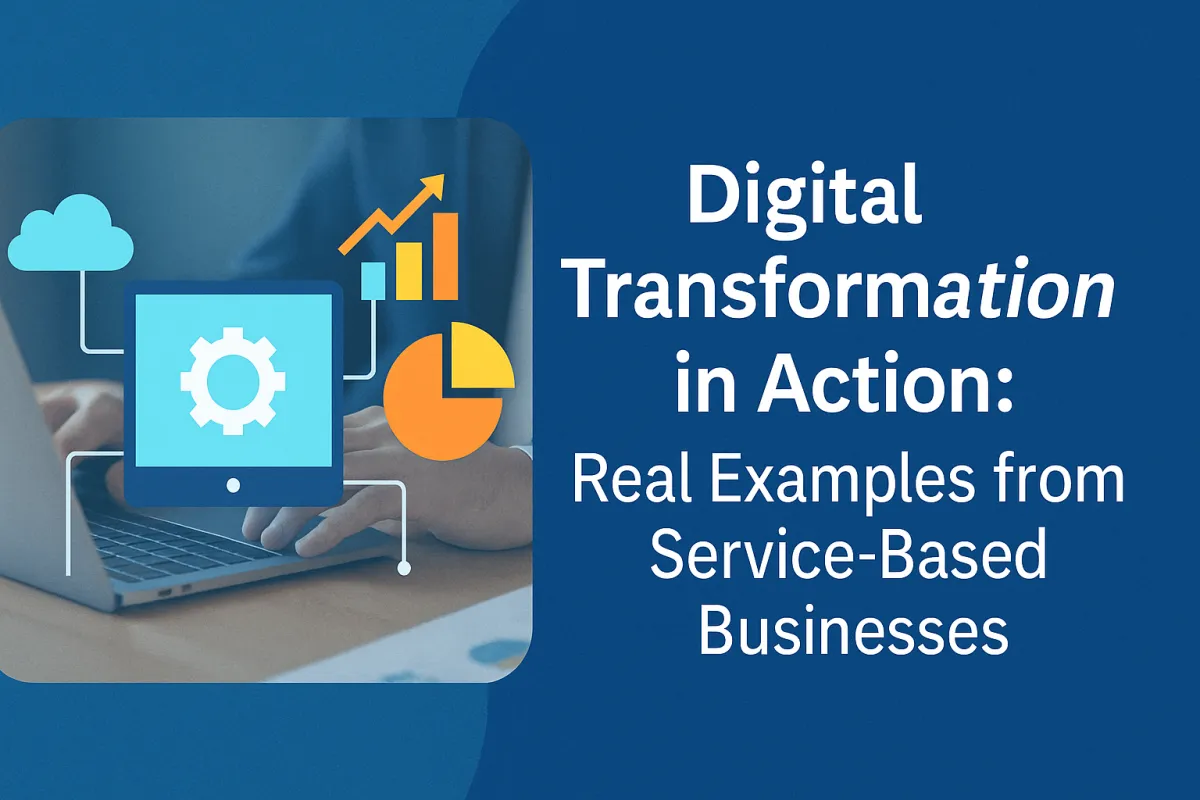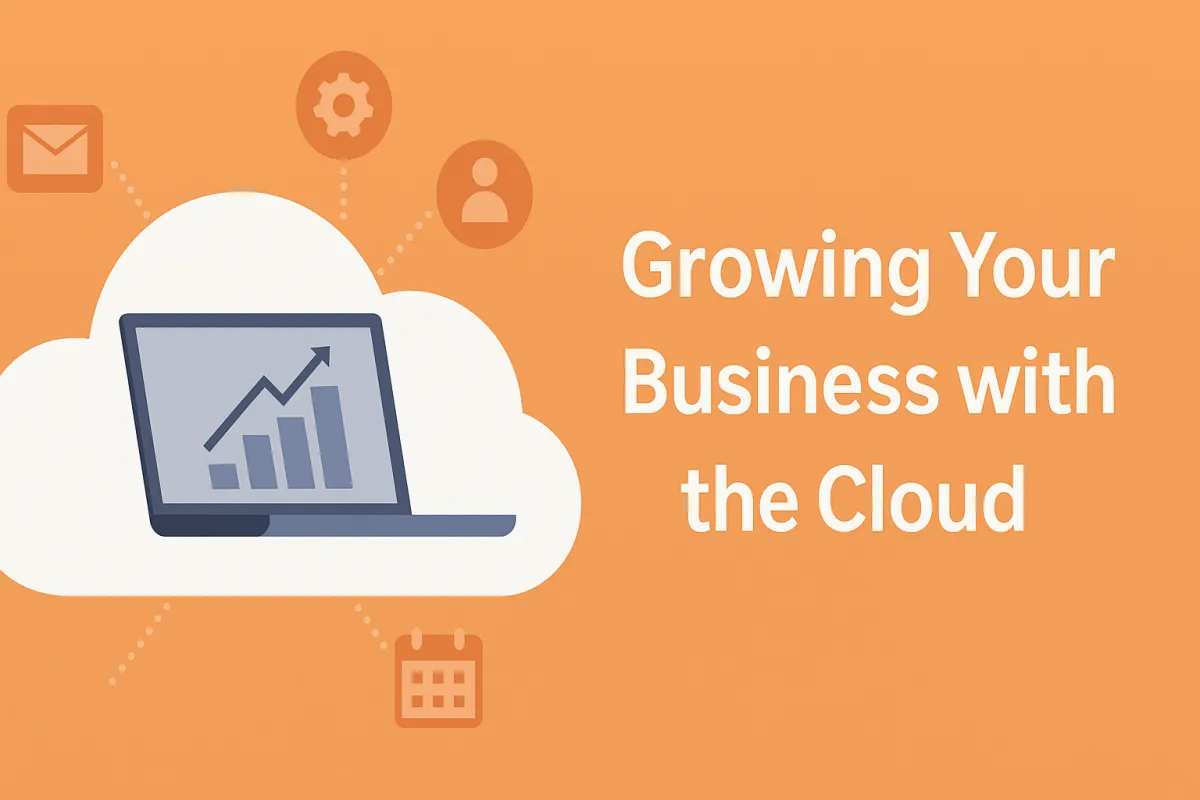Blogs

Smarter Business, Less Tech Stress
Many small business owners hear “digital transformation” and think it’s only for tech experts—but that’s far from true. You don’t need a computer science degree or a massive budget to benefit from technology. When done strategically, digital transformation helps even the most hands-on, non-tech businesses save time, reduce errors, and grow efficiently. The key idea is simple: use technology to make everyday operations smoother. Start by automating repetitive tasks like sending invoices, appointment reminders, and follow-up messages—these alone can reclaim hours each week. Next, centralize your tools so customer data, billing, and scheduling live in one connected system. That reduces duplication, confusion, and mistakes. Digital tools also improve communication—internally and with customers—through chat widgets, automatic confirmations, and team collaboration platforms. You’ll see fewer missed calls, faster responses, and happier clients. As your operations become more streamlined, you’ll be able to scale without dramatically increasing costs. Even if tech feels intimidating, start small—pick one problem, find a simple tool, and build from there. The goal isn’t to turn your business into a tech company; it’s to make work easier, smarter, and more profitable. With the right approach, digital transformation becomes not a burden—but a breakthrough.
Clearing the Path to Digital Success
Digital transformation can be one of the best moves a business makes—but it’s not without its challenges. Many companies begin with enthusiasm, only to hit unexpected roadblocks that stall progress or create frustration. The good news? Most of these issues are predictable—and preventable—with the right preparation and strategy. The most common challenge is a lack of clear vision. Without defined goals and a roadmap, businesses end up chasing tools instead of results. Others face resistance to change from employees who fear disruption or added workload. Poor training and limited support can further derail adoption, leaving new systems unused or misapplied. Integration issues are another hurdle—when systems don’t “talk” to each other, it leads to duplicated work, data silos, and inefficiency. Likewise, neglecting metrics and measurement makes it impossible to gauge success or adjust course effectively. Skill gaps, especially in small teams, and concerns over security and data privacy also slow transformation efforts. The key to success is anticipating these barriers before they appear. With clear communication, phased implementation, consistent training, and smart partnerships, any business can overcome these obstacles. Digital transformation isn’t about perfection—it’s about progress. When done strategically, it creates a stronger, more agile, and more competitive business ready to thrive in the modern marketplace.
Digital Makeovers That Drive Growth
Digital transformation isn’t just a concept—it’s happening every day across real service businesses. From small repair shops to growing agencies, companies are using digital tools to work smarter, improve efficiency, and deliver better customer experiences. These examples show how simple shifts can lead to big results. A health clinic reduced no-shows by automating scheduling and appointment reminders, saving hours of manual calls. A local repair shop adopted a CRM to centralize customer history, making it easy to personalize service and increase repeat business. A marketing agency streamlined communication and deadlines through project management automation, improving teamwork and client satisfaction. Field-based companies, like home service providers, now use mobile apps for digital job tracking, cutting errors and boosting productivity. Even consultants and coaches elevate their professionalism with client portals that simplify communication and document sharing. The takeaway? Digital transformation doesn’t require massive budgets or advanced tech skills. It’s about identifying your biggest bottlenecks—scheduling, data management, communication—and applying smart, affordable tools to fix them. Small, consistent upgrades can completely reshape how your business operates, setting you apart from competitors and positioning you for long-term growth.
The Future of Growth Lives in the Cloud
In today’s digital economy, cloud-based solutions have become the backbone of modern business growth. Whether you’re running a startup, a service company, or an established enterprise, the cloud allows you to work smarter, scale faster, and operate more efficiently—all without the heavy costs of traditional IT infrastructure. At its core, the cloud simply means using internet-based servers and software instead of managing everything on your own hardware. This shift brings major advantages: lower upfront costs, flexible pay-as-you-go pricing, and the ability to scale up or down instantly as your needs change. Businesses can launch new tools or services in minutes rather than weeks, fueling innovation and speed to market. Cloud platforms also empower collaboration—teams can access shared files and tools from anywhere, keeping work seamless and consistent. Built-in security, data backup, and disaster recovery features ensure your operations stay protected and resilient. Plus, with advanced analytics and AI integrations, cloud systems help you make smarter, data-driven decisions every day. Ultimately, moving to the cloud isn’t just a tech upgrade—it’s a growth strategy. It gives small and midsized businesses enterprise-level agility, security, and insight without enterprise-level costs. The result? A future-ready foundation built to support efficiency, scalability, and long-term success.

Explore a better way to grow

Whether you’re looking to increase visibility on search engines, build a stronger brand or increase traffic to your website, you need a Digital Marketing Company that can deliver the desired results.





